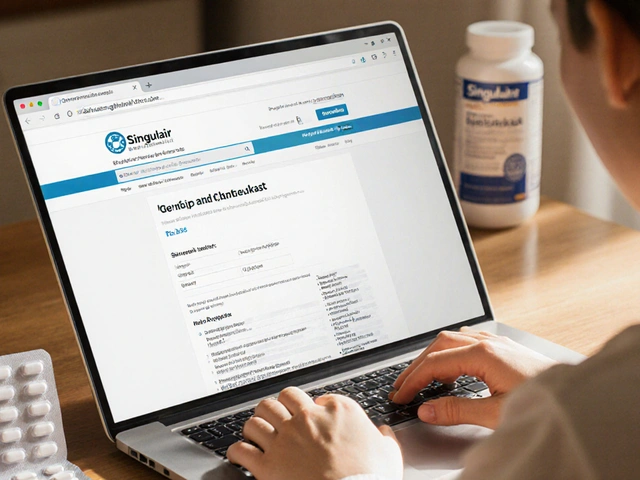Pirfenidone – Uses, Dosage, Side Effects and Alternatives
When working with pirfenidone, a prescription drug that slows lung scarring in idiopathic pulmonary fibrosis. Also known as Esbriet, it belongs to the anti‑fibrotic class of medicines and is taken orally in divided doses. The core idea is simple: pirfenidone interferes with the pathways that lead to excess collagen buildup, which makes the lungs stiff and hard to breathe. If you’ve never heard of this condition, think of it as a relentless scar‑forming process inside the airways that reduces oxygen flow over time.
Key Concepts and Related Therapies
The disease that pirfenidone targets is idiopathic pulmonary fibrosis, a chronic, progressive lung disorder marked by thickened, scarred lung tissue and declining lung function. Managing this disease requires more than just one pill; clinicians often combine lifestyle changes with anti‑fibrotic drugs. Another widely used anti‑fibrotic is nintedanib, a kinase inhibitor that slows disease progression by blocking signals that lead to tissue scarring. Comparing pirfenidone and nintedanib shows two different ways to hit the same problem: pirfenidone reduces collagen deposition directly, while nintedanib shuts down upstream signaling. Both drugs demand regular monitoring, especially of liver function, because they can raise enzyme levels. That’s why liver function tests, blood checks that measure ALT, AST and bilirubin to ensure the liver tolerates the medication become a routine part of therapy. Understanding these connections—pirfenidone treats IPF, IPF needs anti‑fibrotic therapy, anti‑fibrotic drugs include nintedanib, and safe use requires liver monitoring—helps patients and doctors make informed choices.
Below you’ll find a curated set of articles that dive deeper into each of these points. Whether you’re looking for dosing schedules, side‑effect management, real‑world patient experiences, or a side‑by‑side comparison of pirfenidone and its peers, the posts ahead cover the full spectrum. Use them as a practical toolbox to navigate treatment decisions, monitor your health, and stay up‑to‑date on the latest guidance for managing idiopathic pulmonary fibrosis.




